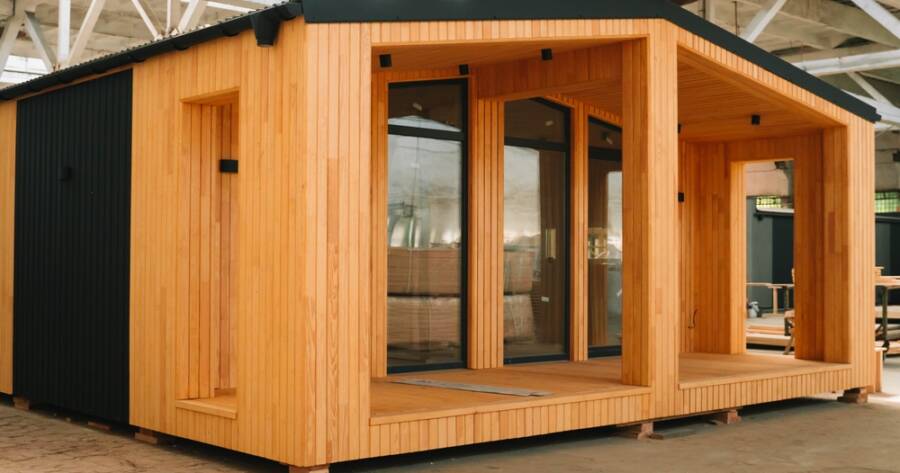Prefabricated homes are revolutionizing the housing market by marrying sustainability with affordability. Offering lower costs and efficient construction methods, prefabricated homes meet diverse environmental standards while ensuring energy efficiency. The durability, flexibility, and potential financial benefits make prefabs an attractive option for eco-conscious individuals.
Sustainable and Affordable
In recent years, prefabricated homes have emerged as a leading option for those seeking sustainable and affordable housing. These homes offer an innovative approach to construction, with benefits that extend beyond cost savings. One major advantage is their lower cost per square foot compared to traditional builds, giving homeowners access to unique, high-quality designs without the added expense of hiring an architect.
Efficient Construction Process
Prefabricated homes are built in climate-controlled factories and then assembled onsite, greatly reducing construction time and minimizing weather-related delays. Companies like Unity Homes and BrightBuilt Home are setting the pace in New England by constructing energy-efficient panelized homes that can be put together in a matter of days. This streamlined process not only accelerates project completion but also minimizes material waste, contributing to their sustainability.
Energy Efficiency and Environmental Impact
Sustainability is integral to prefabricated homes. They are often constructed using materials like structural insulated panels (SIPs), which offer high energy efficiency by reducing CO2 emissions and preventing energy waste. This tight sealing technique contributes to significantly reduced heating and cooling costs.
Additional sustainable features frequently incorporated into these homes include energy-efficient appliances, solar panels, and passive solar designs. For instance, Unity Homes designs prefabricated houses that are entirely off the grid, utilizing solar energy and other renewable resources to power the home. They typically offer energy systems that reduce energy bills and long-term utility costs, making them an appealing choice for environmentally conscious homeowners.
Durability and Flexibility
Prefabricated homes are renowned for their durability. Built to adhere to strict seismic, fire, and hurricane codes, these homes are capable of withstanding various environmental conditions. This is achieved through construction with durable materials such as rust-proof composite structures and reinforced chassis. Their durability is not hindered by their flexibility, as these homes can be customized for different aesthetics and environmental settings. For example, adaptations for extreme weather and off-grid setups are readily available, offering options like special climate packages and autonomous waste disposal.
Cost Considerations
While prefabricated homes can have a higher upfront cost, homeowners often experience considerable savings over time. The streamlined building process begs for fewer resources, which translates to reduced material costs and less waste. Many prefab companies, such as New Frameworks in Vermont, are pioneering affordable solutions with prices starting at competitive figures, including options like the Cabañita model, which exemplifies their sustainable and compact design approach.
Despite their upfront costs, prefabricated homes provide value through various financial benefits such as federal tax credits for solar panel installation. Moreover, the decrease in long-term utility costs enhances their overall affordability. These homes are built with resilience and energy efficiency in mind, which contributes to quality of life improvements while maintaining monetary advantages.
Potential and Challenges
Although prefabricated homes offer a viable solution to the United States housing shortage, their adoption remains limited. Currently, they constitute only a small fraction of single-family homes. However, as awareness grows about their benefits, the potential for these homes to alleviate construction delays and labor shortages becomes ever more apparent. Due to their consistency in production and availability of skilled factory workers, prefab homes alleviate many challenges faced by traditional building methods.
Nonetheless, the industry faces challenges, such as high construction costs driven by trade wages and regulatory factors, which innovative design methods strive to circumvent. Companies like New Frameworks overcome these obstacles by focusing on sustainable, locally-sourced materials and environmental consciousness, showing a shift towards greener practices.
Why You Should Learn More About Prefabricated Homes
Prefabricated homes bridge the gap between sustainability and affordability, making them an increasingly appealing housing solution. They offer energy-efficient and environmentally friendly designs that reduce long-term costs while maintaining high-quality living standards. With rapid advancements in prefab technology, it is vital for prospective homeowners to explore how these innovative solutions can cater to their needs. As more individuals become aware of their benefits, prefabricated homes stand poised to redefine the future of sustainable living in the United States.

